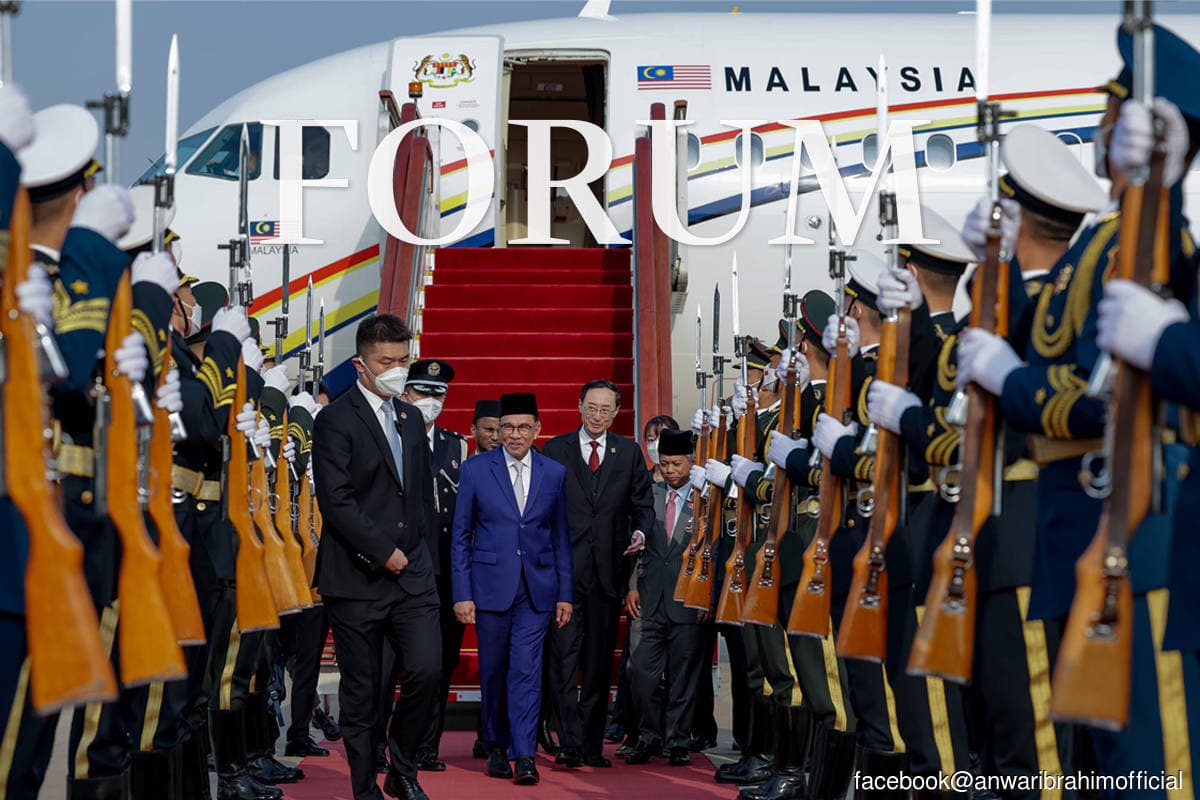
This article first appeared in Forum, The Edge Malaysia Weekly on June 19, 2023 - June 25, 2023
In late March, Prime Minister Datuk Seri Anwar Ibrahim led a high-powered delegation on a work visit to China. Like his predecessors, Anwar was mainly motivated by the economic opportunities offered by the Chinese market. Indeed, at the conclusion of this visit, the Anwar administration celebrated the securing of a staggering RM170 billion worth of foreign direct investment (FDI) commitments from various Chinese transnational corporations (TNCs).
Two issues warrant further examination. First, various reports highlight the targeting of industries ranging from green energy and electric vehicles to the digital economy. This much is true, but what is more intriguing is the seeming courting of capital- and technology-intensive firms such as Zhejiang Geely Holding Group Co Ltd and Rongsheng Petrochemical Co Ltd. The former is solidifying its partnership with DRB-Hicom Bhd in increasing the market presence of Proton vehicles both in Malaysia and Southeast Asia, while the latter is planning to set up a refining facility in Johor. Additionally, a more careful examination unveils the reliance on construction and real estate firms. Some of them include household names like Sunsuria Bhd and LBS Bina Group Bhd as well as affordable housing government agency Perbadanan PR1MA Malaysia.
For the Chinese, the name that stood out the most is Hunan-based Sany Group Co Ltd, one of Asia’s largest construction equipment manufacturers. While construction and real estate will remain important to any economy, the worry is that it tends to take on an increasingly marginal role as an economy progresses, especially given Malaysia’s ageing population and high household debt.
Notwithstanding the above, it is unfair to claim that the administration gathered a hastily cobbled together coalition because the effort to coordinate dialogues between disparate interest groups is considerable, even for the most seasoned organisers. Rather, a constructive perspective, forwarded here, is that a more focused approach in targeting FDI would likely exhibit clearer underlying trends that reveal long-term policy objectives.
Nevertheless, it must be noted that investment commitments should always be viewed with a healthy dose of scepticism. For starters, they are not usually legally binding. They also serve a wider purpose in political signalling. Lest we forget, Anwar’s China trip followed close on the heels of his official visit to Saudi Arabia, where supposed meetings between the Malaysian prime minister and the Saudi king and crown prince did not materialise. While it is believed that the meetings did not take place because of scheduling conflicts, the episode has provided ammunition to opposition parties who saw it as a snub from a major Islamic nation.
Secondly, how do these deals inform our understanding of broader Malaysia-China investment and trade ties? Notwithstanding the rhetoric that high-profile visits to China usually generate, it is virtually impossible to will economic gravity out of existence.
Several studies point out that since at least the 2000s, Malaysian policymakers have found it increasingly tough to attract FDI from “traditional” sources (that is, the industrialised Western countries, Singapore and Japan) in transitioning the nation towards more sophisticated activities that yield more value-added ones. Squeezed by an increase in business costs and the emergence of a newer group of developing economies just as (if not more) hungry to court investment dollars, the Malaysians have been forced to seek alternative sources of investment. China has thus emerged as an attractive FDI partner, especially since the formulation of the Belt and Road Initiative. This approach was on full display during the tenure of former prime minister Datuk Seri Najib Razak (2009 to 2018).
For the Najib administration, government-to-government collaboration is an especially popular platform to push ambitious infrastructure endeavours. Some of the most prominent Chinese infrastructure projects initiated during his tenure include the East Coast Rail Link and Malaysia-China Kuantan Industrial Park. Despite some populist backlash, these projects have continued rather steadily in the post-Najib era. This stance is unlikely to change drastically under Anwar as his legacy hinges, to a large degree, on the ability to deliver economic results.
In addition, there is the investment and trade diversion effect resulting from the US-China geoeconomic rivalry. According to Minister of Investment, Trade and Industry Tengku Datuk Seri Zafrul Abdul Aziz, the Malaysian economy has definitely benefited from the recent relocation of TNCs from China, particularly in the electrical and electronics (E&E) industry. However, analysts familiar with this industry point out that Malaysian firms are competitive almost exclusively in labour-intensive downstream semiconductor chip assembly and packaging, where it accounts for 13% of global market share. While helpful in hitting “top-line” key performance indicators, simply channelling this recent pool of relocating FDI into assembly and packaging could jeopardise “bottom-line” indicators such as technological and innovation spillover, thereby unnecessarily entrenching Malaysia’s presence in the labour-intensive-cum-low-end portion of the E&E industry.
To this end, more can be done to stimulate longer-term technological upgrading, thereby facilitating value capture from more sophisticated activities such as design, research and systems integration. Critical to this discussion is the shift from deploying general incentives to more carefully calibrated ones as well as interest alignment involving Malaysian firms, educational/training institutions and foreign TNCs.
Guanie Lim is an assistant professor at the National Graduate Institute for Policy Studies, Japan. Aaron Pek is a former fund manager who now writes his own investing newsletter, Value Investing Substack.
Save by subscribing to us for your print and/or digital copy.
P/S: The Edge is also available on Apple's App Store and Android's Google Play.
